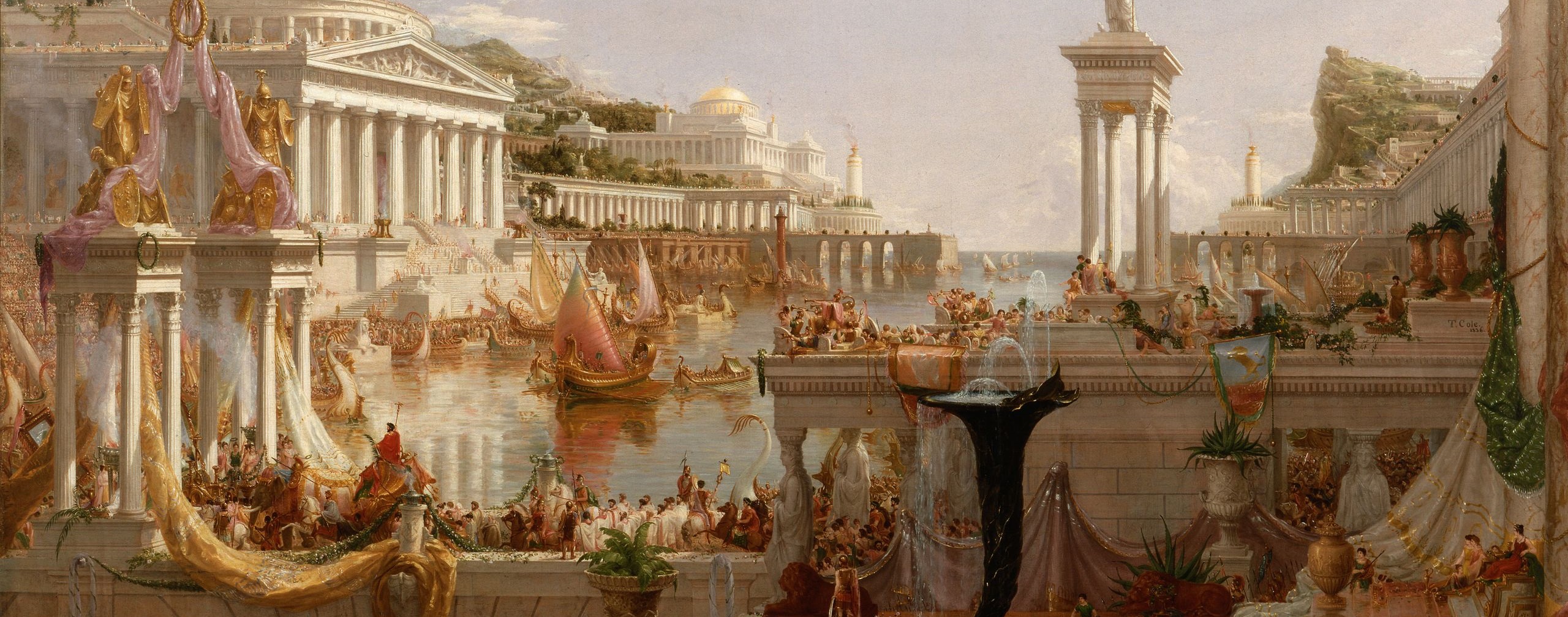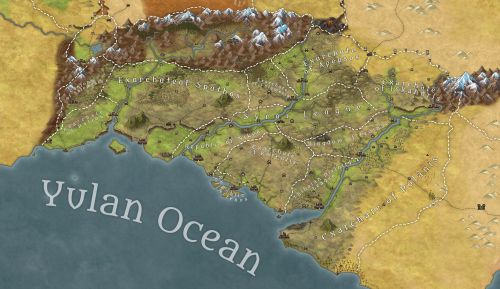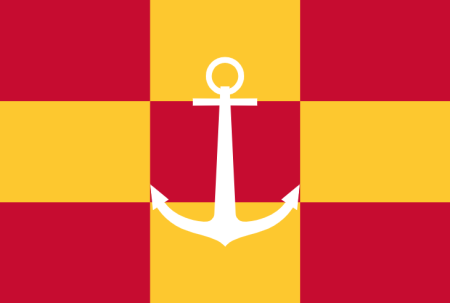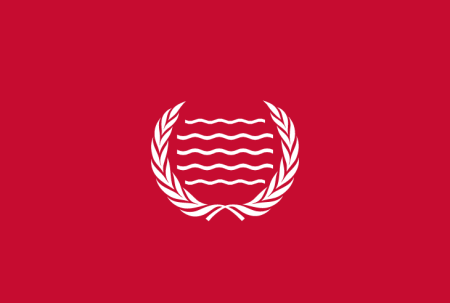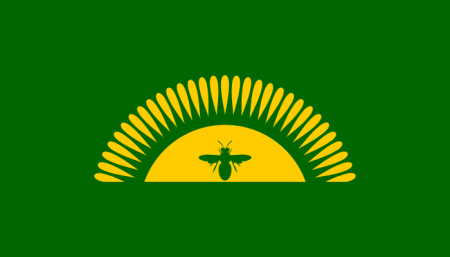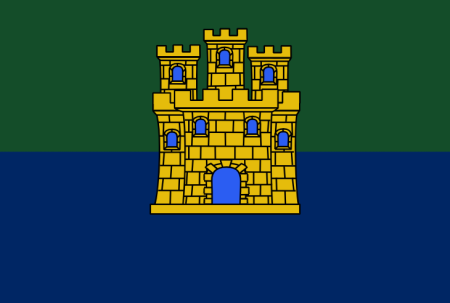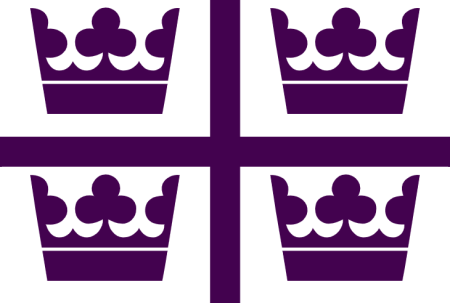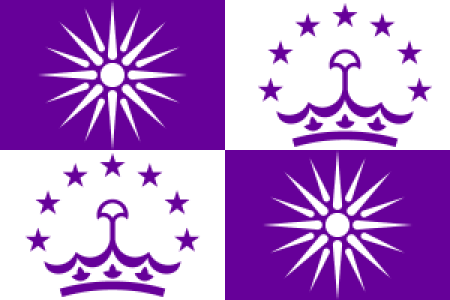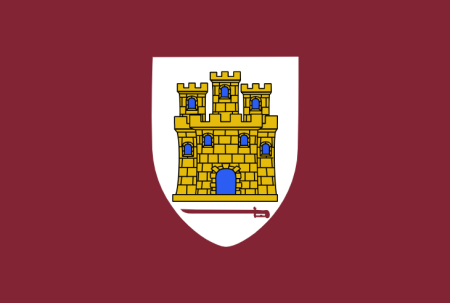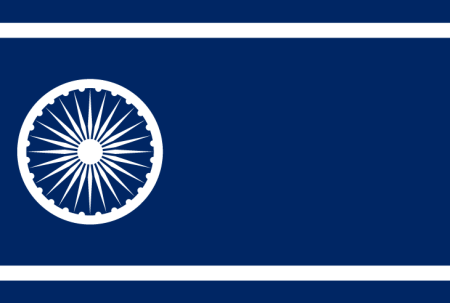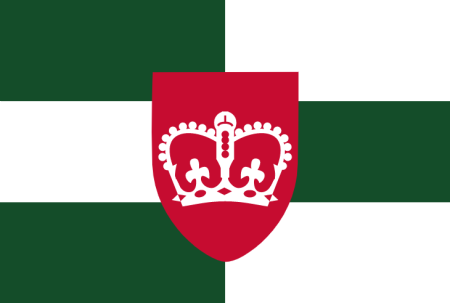Aeillan Successor States ((/ ei̯län səksesor steits /))
The Aeillan Successor states are a geopolitical group of states in the Aeillan region of Southwest Galisea, so labelled as they are the states that have succeeded the Aeillan Empire since its collapse in the Aeillan Succession War. The Aeillan Successor states have more or less fallen into a state of equilibrium in the intervening centuries though many, particularly coastal successors have sought to upend the current order, with certain political factions in Nikea, Apepsos, and Artenos seeking to establish a reunified Aeillan civilization under their own banners. Historically the inland power of Apepsos was the dominant power in the Aeillan region, but it has since fallen into a state of genteel decay as maritime states like Artenos, Polanis, and Nikea have used their domination of transoceanic trade to establish themselves as the new powers of the Aeillan Region.
The Aeillan region has long been home to civilizations, and the ruins of past societies dot the less developed parts of the region, and under the city streets of Aeilla's urban centers. These ruins, and catacombs hold a great many mysteries and treasures waiting for discovery by intrepid adventurers. Of particular note are the remains of the Yulan-Tai Civilization, which include artifacts of great power, details for spells that have not been cast in an age, and most impressively, Aeilla is home to a large portion of the mysterious Ancient Path, a network of tunnels assumed to have been constructed by the Yulan-Tai, that enable rapid travel over vast distances, and hold more than a few treasures of their own, but are fraught with many dangers, and host to a powerful magical effect that has the potential to warp the minds of those unprepared for the tunnels.
The Aeillan successors, as home to many of the largest population centers in western Galisea are also a place to conduct business, thanks in large part to the robust merchant class, and the dense concentration of artisans and craftspeople in the region. One can also easily seek out employment as there is no shortage of nobles, wealthy merchants, and other forces looking to hire out blades for hire to seek ancient treasures, clear out dangerous locales, or engage in more shady activity. Lastly, the great temples of the cities, and the Schola Magos in Nikea provide exensive religious and magical services, and a place to research arcane texts and old religious artifacts.
Culture
The Aeillan successor states are home to most of the Aeillan peoples in Getninia. Aeillan culture favors generally cosmopolitanism, though in general there is a certain sense of cultural superiority. Similarly the Pandroi faith, is predominant in the successor states, though with a fairly strong emphasis on maintaining a Eiríni ton Theón or peace of the gods, requiring the peaceful adoption and co-opting of other deities into the dominant custom of Aeilla. Most in the Aeillan successor states speak the Aeillan language, though common is frequently also incorporate the Common, trading language into daily speech, particularly among the mercantile classes, and along the southern coast of the Aeillan Region. Since the fall of the Aeillan Empire, and its unifying hegemony over the whole of the Aeillan Civilization, there has been a slow resurgence of definitive Ilosi, Tyroi, and Spartharoi identities and cultures, though these still remain less well defined than before the unification of the Aeillan Region.
Aeillan culture has continued its favoring of strong families, generally headed by a senior patriarch, or more rarely a senior matriarch with near absolute authority in matters of the family. The head of the family is in charge of the house purse, though this is often delegated to their spouse, and arranging marriages for the younger members of the family, rarely, family heads even have control of which extramarital lovers are allowed to pursue family members, and whom family members are allowed to pursue. Family honor, and the standing of the family name is extremely important and those that act dishonorably, and especially criminally are quickly disowned by their families, and effectively severed from a functional life in Aeillan society.
Artistically, the Successor States have continued Imperial traditions, with a strong, and longstanding tradition in mosaic and sculpture making. Large stonework is very popular, particularly among the wealthy elite. The successor states also have a rich theatrical culture, particularly the Tyroi, and Polanis in particular, which is host to one of the largest theaters in Galisea. Music is relatively neglected however, with the Aeillans being relatively bereft in indigenous musical traditions, and indeed being net cultural importers if musical instruments and talent, particularly Gallaca.
History
The Successor States of the Aeillan region can trace their origins to the establishment of the Exarchies during the Aeillan Empire. These military and political bodies, established by the Emperor were intended to decentralize the power of the Empire, and enable Imperial officials to respond more quickly to threats and crises more quickly then before, while granting the Emperor more political control than the previous order of elected regional Consuls. These mostly self sustaining powers were kept in check by a strong, centralized force of Imperial Hetairoi, however, when that force disintegrated over the course the Feloran invasion, and more so in the Aeillan Succession War after the collapse of the Ruaros Dynasty, the Exarchates of the Empire broke away from each other to form their own states.
Over the intervening five centuries there have been few major conflicts, though raiding and smaller wars are fairly common. However, after the terrific bloodshed of the Aeillan Succssion War, and of the 1st Aeillan Reunification War, most of the Aeillan Successor States became far more risk averse, with most of the more powerful Exarchs becoming increasingly afraid of risking the destruction of their own bases of power in a vainglorious attempt to restore the glory of the Old Empire, and as a result the scale of wars have become smaller. There have however, been significant shifts in power, have seen significant territorial shifts, and more rarely the creation of new successor states, with the creation of Syros, Thibaia, and Salemesia having carved out their own territories after the breakup of the Empire. Similarly the Exarchate of Tymros was destroyed by the expansion of Nikea, and eventually by the creation of the Syroi League.
Since the fall of the Aeillan Empire there have been two attempts made thus far to reunite the Empire. The first, and bloodiest of these happened roughly 100 years after the Succession War where the Brutii of Nikea have attempted to seize control of Apepsos, and thus secure the bulk of the Ilos River Valley as a base from which to take control of the entire Aeillan Region, resulting in a Spathoi, Korentine, and Peptid Alliance beating the Nikeans in battle and thwarting the attempt. Almost three hundred years later, a second attempt caused by a mercantile uprising attempted to unify an Aeillan Republic was largely crushed, though the Syroi League was established in the chaos. Since the Second Aeillan Reunification War there have been a few unification movements, notably the Rauraranids in Apepsos, an alliance between the Vatinii, and the Prostrokoi of Nikea, and the expansionist faction Artenesian Senate, and the Delatrios family of Spathos being the major players in the core region of the Empire with an upstart half-Gallacan King having similar ambitions on the Tyros, though with little ability to actually enforce this claim.
Demography and Population
The Aeillan region is home to some 32,018,000 residents who are largely living close to rivers and to the coastal regions of the Aeillan Region with the interiors comparatively underpopulated. The coastal region is densely populated, and Aeilla is home to an unusually large number of major cities in comparison to the rest of Galisea, this is large part thanks to unusually high crop yields due to hybridized Aeillan/Cyrenic/Feloran irrigation technology, and an early industrialization brought about by the limited adoption of Cyrenic models of production, and the development of water mills. Though historical trading routes, and urban development including agricultural production in urban areas have also contributed to the large size of a great many cities in the Aeillan regions.
The Aeillan Successor States are largely populated by human members of the Aeillan ethnic group, with each of the rivers being home a distinctive ethnic subgroup, the Ilosi, Spartharoi, and Tyroi. Other ethnic groups and nonhumans are less common, though there are substantial numbers of Cyrenic dwarves, Grecci gnomes, and humans of non-Aeillan ethnicity in places, and a fair number of enslaved persons of more exotic backgrounds.
Territories
The Aeillan successor states collectively have 1,354,000 square kilometers of territory between them, with the average Aeillan successor being about one thirteenth this size. The whole of the Aeillan region is axially oriented to the east-west axis, and takes roughly 18 or 19 days to travel from the east to west, or a fortnight to travel from north to south, assuming one has access to good roads, which is not a guarantee in some of the less developed Aeillan successor states.
The Aeillan region is of a semi-humid climate towards the south and west, becoming drier as one travels north and east. Iskandris and the westernmost parts of Polanis are nearly desert whereas the wetter areas are primarily composed grassland, and in certain areas, forests. In the northwest mountains dominate most of the borderlands of the Aeillan Region. In the drier regions therefore, civilized and cultivated regions cling closely to one of the three major rivers that dominate Aeilla, the Spatharari, Tyros, and Ilos each of which deposit rich soil and water into their watersheds throughout much of their body.
Military
See Also
Aeillan successor militaries are largely continuations of the Imperial Military tradition, with most successors continuing the Akritae, Penandroi, Palátoi (Hetairoi) division of military forces with Akritae being the front line, slowing down enemy incursions, and engaging in short term campaigns, the Penandroi serving as the professional core of the army for use in extended offensive campaigns, and the Hetairoi being elite auxiliary forces. In the era of the successors there has been a new formation, the Stratalogi levies and militias that are raised only in times of war, and are of varying quality. Many Aeillan Successor States also hire mercenaries for major offensives, and deniable operations. On the sea, navies have steadily grown in size, and undergone a revolution in design, as increasingly cannon based designs have slowly displaced boarding focused ships in at least the most modern of Aeillan Navies. Most Aeillan troops, or at least most professional Aeillan troops are armored in light or medium, mass produced armors, and bearing simple easy to use weapons. Traditionally, swords, war hammers, and spears were favored, but gradually these have given way to the primacy of the pike. In the past century there has been yet another military revolution as the development of firearms and cannons have marked a sea change and Aeillan land, aerial, and seaborne warfare, and modern Aeillan armies transitioning largely to pike and shot tactics though resistance to aerial attacks have sometimes thrown a wrench into this transition.Technological Level
The Aeillan Successor States are some of the most advanced societies in Galisea, second only to the more advanced of the Dwarven societies, and indeed closely rivaling Elven societies in Felora. As a result of trade into and out of the Aeillan region, the Aeillan peoples have been relatively early adopters of a great many advanced technologies, firearms are relatively commonplace in Aeilla, as are oceangoing sailing ships, and in certain places clocks. Most importantly, thanks to trade coming from Volgeberg and Cyrenica, and the inventiveness of its own citizens Aeilla has adopted the printing press, as well as the methods and technology necessary to trigger something of an early industrial revolution, and already the most advanced Aeillan successors have started to see a slow shift away from traditional agrarian economies to more industrially oriented ones, though a lack of resources has slowed progress in this particular respect.
Religion
See Also
Most Aeillans practice the Pandroi faith, a polytheistic faith consisting of twelve central deities and a number of other, regional deities. Pandroi in Aeilla has an additional five or six deities that are fairly consistently worshiped in addition to the central twelve, gods intended to be "for" the Kenku, Aarkocra, Dwarves, and Elves as well as Hadriana, an Aeillan Empress deified by the Aeillan Pandroi church towards the end of the Imperial Period. It is common practice for Aeillan successor states to adopt a specific deity as its patron, receiving more festivals than is the norm for that deity within the particular successor state. Other faiths are also present, specifically ancient localized religious traditions, as well as foreign faiths practiced by non-Aeillan populations in the region, especially enslaved peoples clinging to deities from their homeland as a way of maintaining their native culture.Trade & Transport
The Aeillan Region, being home to three major waterways and situated close to the coast has several major trade routes that crisscross the whole of the region. The largest two of these, the Ilos River Trade Route, and the maritime Gaungdao to Erigan trade route form the backbone of commerce in the Aeillan region, with other riverine routes, and the transcontinental routes from Leandris and Felora serving as secondary though still enormously significant trade routes. Rounding it out, and overland routes into Terruk Mal, and the coastal Qua'adar to Gallaca route, as well as intra-Aeillan circuits rounding out the commercial arteries of the Aeillan region. The development of these trade routes has been a major contributing factor to the relative balance of power of the successor states, with those along the Ilos, and the coast having become extremely powerful on the international trade between Aeilla, and other parts of the world.
The bulk of cargo transport is conducted over waters, especially over rivers, and along the coast, as indeed riverine routes are center to trade and transport in the Aeillan region. Shipping is conducted with some of the more advanced ships and boats in Galisea. Overland travel is however, a viable alternative with well developed road networks crisscrossing at least the more developed of the successor states, these roads, maintained since the days of the Empire, and more rarely expanded since the Imperial period have long served as a rapid transport networks, particularly for people who want to move around the areas further afield from the rivers.
Type
Political, International
Alternative Names
The Aeillan Polei, The Aeillan Inheritors
Predecessor Organization
Demonym
Aeillan
Location
Official Languages
Related Professions
Controlled Territories
Neighboring Nations
Related Ethnicities
Successor States in Music
(Worldbuilder's Note: The following playlist is suitable background music for an RPG set in the Kingdom or to note the Aeillan culture. This list also provides some tracks that would add to the general feel of the Successor States while not necessarily being culturally apropropriate.)List of Successor States
Trade agreements with most states.
Variable
The Kingdom of Gallaca has generally peaceable, but varying relationships with the various Successor States, as a rule they do significant trading with maritime states, though they often are at odds with pirates based out of Halion who often raiding Gallacan shipping, and take prisoners as slaves.
Low Intensity War
The Terruk frequently raid into Aeillan territory, and the northern Aeillan states frequently abduct people into slavery from the Terruk.

